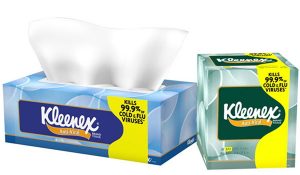The power of being first
The power of being first. By coming in first, companies not only get bragging rights but also a whole set of advantages. Brand name recognition, economies of scale and switching costs are all perks that come by being the first to bring a product or service to a market. Kleenex is a great example on how brand name recognition has allowed their brand to become synonymously associated with normal everyday products.
 However, like my peer Claire Lee indicated in her blog, “A Goodbye to a Legend”, to maintain a company’s #1 status requires flexibility. Blackberry is an excellent example of how a company that enters into a new market meets its downfall through ignorance. Blackberry had a great produ
However, like my peer Claire Lee indicated in her blog, “A Goodbye to a Legend”, to maintain a company’s #1 status requires flexibility. Blackberry is an excellent example of how a company that enters into a new market meets its downfall through ignorance. Blackberry had a great produ
ct but failed to innovate as consumer trends shifted. Claire Lee says “While other companies produced products to satisfy this demand, Blackberry was solely focused on their value proposition- security and productivity- to keep their existing customers.” This rings true for many other companies that had great services/products but failed to change with the consumer.
Kleenex on the other hand was able to innovate as trends changed. By being the first into a market, and following consumer trends, Kleenex was able to avoid Blackberry’s fatal mistake. Kleenex has now been genericized to refer to any facial tissue regardless of brand and the Oxford dictionary now has a definition for Kleenex: “An absorbent disposable paper tissue.” How has Kleenex become so popular that we now refer to any facial tissue as such? It was by being the first one in the market and by constantly finding other ways to engage with the consumer.

2008 Rank: 74
2008 Brand Value (Millions): $4,636
Parent Company: Kimberly-Clark (KMB)
To ward off generic rivals, Kleenex has been advertising heavily—from TV spots to an Internet site that lets consumers create personalized Kleenex boxes.
Kleenex was the Western world’s first facial tissue. It was introduced in 1924 by Kimberly-Clark and marketed as the first hygienic, disposable cleansing cloths. In 1932, the Kleenex began running ads with their new phrase “The handkerchief you can throw away!” By associating themselves to a handkerchief, people began to use the word Kleenex to refer to any disposable facial tissue. Additionally, Kleenex most recently ran an advertisement called “Unlikely Best Friends” which displays the similarities between a man in a wheelchair and Chance, a dog who lost the use of its legs. This heart wrenching commercial was shared 138,000 times in a week and made it so that if you didn’t have a box of Kleenex now, you’ll feel like you’ll need one. Kleenex knew this and made the ad’s tagline to be “Kleenex: Someone Needs One.”
By being first to provide a product to a market, Kleenex was able gain an advantage that has kept them ahead of their competitors. However, Kleenex was able to maintain its advantage by constantly finding other ways to engage with its consumers.
Word count: 450
A Need for Kleenex | Heavenly Sunshine. (2016). Arceysbibleminute.com. Retrieved 15 October 2016, from http://arceysbibleminute.com/?p=3831
About Kleenex® Tissue Brand & Messages of Care. (2016). Kleenex.com. Retrieved 10 October 2016, from https://www.kleenex.com/en-us/about
Behind Kleenex’ viral success. (2016).Thestable.com.au. Retrieved 17 October 2016, from http://www.thestable.com.au/kleenex-tops-the-viral-charts/
Bellis, M. (2016). The History of Kleenex: It Wasn’t Meant to Blow Your Nose.About.com Money. Retrieved 10 October 2016, from http://inventors.about.com/od/kstartinventions/a/Kleenex.htm
First Mover. (2006). Investopedia. Retrieved 10 October 2016, from http://www.investopedia.com/terms/f/firstmover.asp
Recover Deleted Photos from BlackBerry Effortlessly. (2016).Datarecovery.wondershare.com. Retrieved 17 October 2016, from https://datarecovery.wondershare.com/phone-recovery/blackberry-cell-phone-photo-recovery.html